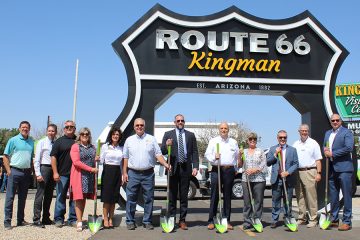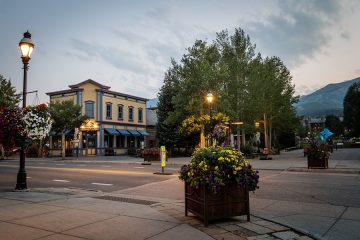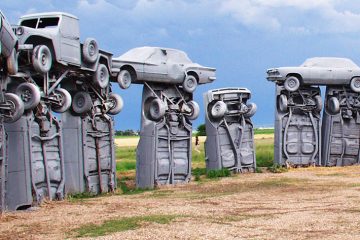- Residencial
- Negocio
-
- Help
-
-
Streaming Class callout
Come to an ALLO Streaming Class!
We're offering free classes across many of our communities to help you learn what streaming is, how to get started, what equipment you need, and how to find the right streaming services for you.
Más InformaciónExplore Fiber link
-
- About
-
-
Featured job
ALLO has immediate openings for:
Bilingual Digital Experience Specialist
Arizona or Colorado
We’re looking for a creative mind to join our fast-paced team of digital disruptors. It's our mission to give our customers and #fiberfam a truly one-of-a-kind online experience. We're looking for someone who is digitally savvy with real writing experience, but character is just as important. You're a great fit if you have a natural instinct for our core values: Honest, Local, Exceptional, and Hassle-Free.
Apply Today
-
What to Expect During Construction.
We want you to be informed every step of the way. As our teams construct the fiber network in your neighborhood we’ll be reaching out by mail, email, and door hangers (among many other things) to keep you in the loop. The website map for your area will always show the most up-to-date information on progress in your neighborhood. If you have any concerns during the construction process please use the contact form below to get in touch.
ALLO is currently constructing a fiber network for Google Fiber in Bellevue, Nebraska. For construction or service-related questions in Bellevue, Nebraska, please call 877.454.6959 or visit https://google.com/fiber/yard. All other concerns can be submitted on the form below.
Construction Steps
- 1 Diseño
- 2 Construction
- 3 Splice/Test
- 4 Ready for Install
Before you even hear about ALLO in your neighborhood, we are working to design the fiber cable paths throughout your community.
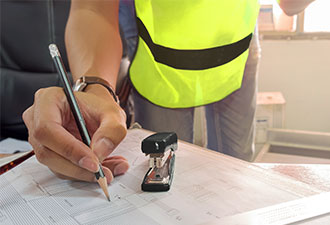
Engineers decide the most efficient way to bring fiber optics to the greatest amount of people in your area.
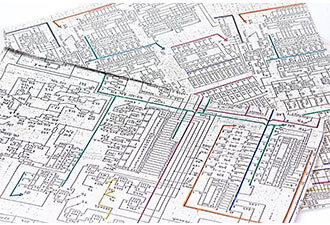
Contractors, city officials, and ALLO collaborate on the fiber path design and submit to the city for approval.
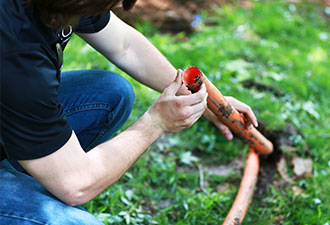
Once approved, ALLO partners with local contractors to begin the construction process.
In an effort to provide advanced notification of construction, ALLO will utilize various communication avenues such as social media, yard signs, ALLO website updates, neighborhood association meetings, email communication, direct mail communication, and a notice placed directly on your front door.
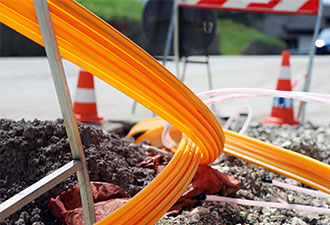
The main fiber pathways are constructed to the distribution points located throughout the city.
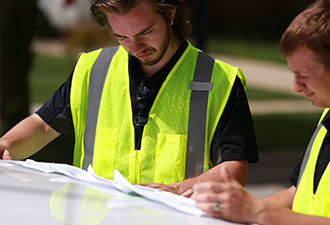
Contractors and utility employees arrive in your neighborhood to mark the locations of existing lines in preparation for local construction.
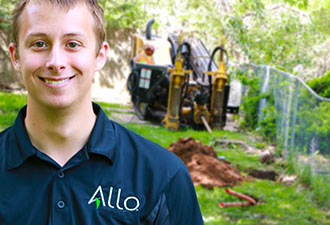
We construct the fiber path from the distribution points directly to utility easements in your neighborhood.
Our splicing team accesses each splice vault and pedestal throughout the city to fuse the individual fibers that will eventually connect to your home or business. Then we test the speed of light as it passes through the fiber to make sure your connection is GIG-fast.
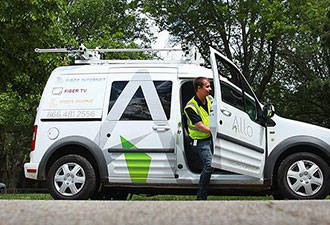
The ALLO team parks a splice trailer near the splice vault in your neighborhood to separate the individual fibers that will eventually connect directly to your home or business.
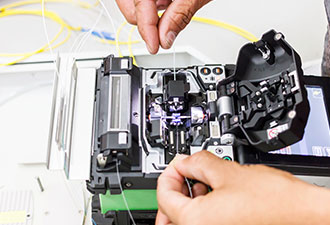
The fiber is tested to ensure a clean, continuous path for the light to travel down.
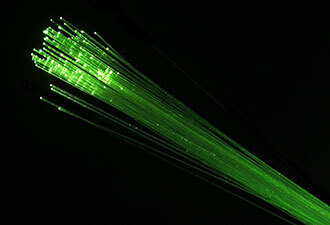
When splicing and testing are complete, the cables are sealed in an air-tight splice case and coiled back into the splice vault, ready to be accessed for individual installations.
Two to four days prior to installation, technicians arrive to connect the fiber to the side of your home or business.
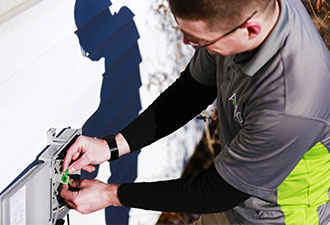
Two days prior to installation, technicians arrive to connect the fiber to the side of your home or business.
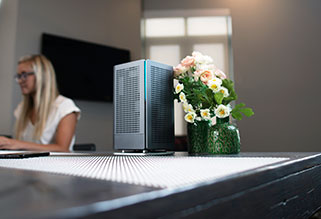
Your ALLO technician brings a direct fiber connection into your home or business and connects it to our (included) Blast Wi-Fi 6 router.
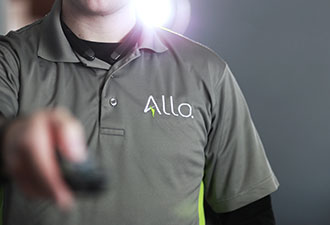
We test your wireless range, walk you through our TV quick guide, help you set up additional devices, test your phone line, and ensure you’re ready to fully enjoy the fiber future with ALLO.
If you’re looking for up to date information on your buildout, click the button below to select your area.
Select Your LocationFAQs
Hay banderas y gente en mi patio, ¿qué están haciendo?
Las banderas o marcas en su área fueron colocadas por las empresas de servicios públicos locales y ayudan a nuestro equipo a identificar dónde están las líneas bajo tierra. Cuando ALLO comienza la construcción de fibra, utilizamos estas marcas para proteger contra daños a su propiedad o servicios públicos. Consulte la siguiente lista para obtener una explicación de las asociaciones de colores de utilidad.
- Blanco: excavación propuesta.
- Rosa: marcas de encuestas temporales.
- Rojo: líneas eléctricas, cables, conductos y cables de iluminación
- Amarillo: gas, petróleo, vapor, petróleo o materiales gaseosos
- Naranja: líneas de comunicación, alarma o señal, cables o conductos
- Azul: agua potable
- Púrpura: agua recuperada, irrigación y líneas de purines
- Verde: líneas de alcantarillado y drenaje
¿Qué tan profundo tendrán que excavar para enterrar la línea de fibra?
The main line in the easements and right of ways are buried between two and four feet deep and the fiber drop to the house or to the pedestal may vary between 8 to 12 inches in depth.
Hay un agujero en mi patio con una cerca a su alrededor, ¿qué es eso?
Estamos colocando pedestales en la servidumbre en su patio. El pedestal, con el tiempo permitido, se instala poco después de que se prepara el suelo por lo que hay una valla colocada alrededor del agujero para mayor seguridad. El pedestal que finalmente se coloca aquí alberga el equipo para proporcionar servicio a varios hogares y negocios en su área. Nuestra intención es dejar su propiedad de la manera en que la encontramos.
¿Qué es un "alivio" o un "derecho de paso"?
La ciudad posee pequeñas pero específicas porciones de su propiedad para acceder y mantener los servicios públicos de la ciudad. Trabajamos con la ciudad para acceder a estas áreas a medida que construimos nuestra red de fibra.
Una servidumbre de servicios públicos permite a una empresa de servicios públicos el derecho de usar y acceder a un área específica de su propiedad para construir, operar y mantener líneas de gas, electricidad, agua y alcantarillado. La servidumbre es a menudo una restricción permanente en la propiedad para que transfiera la propiedad con la casa o propiedad cuando se vende. Tener una servidumbre le da a la utilidad el derecho a utilizar la tierra, pero la utilidad no es dueña de ella.
Un "derecho de paso" es la superficie y el espacio por encima y por debajo de cualquier propiedad real en la ciudad en la que la ciudad tiene interés como propietario o fiduciario para el público para el viaje público incluyendo calles públicas, carreteras, avenidas, carreteras, callejones, servidumbres, aceras, túneles, viaductos o puentes.
¿Por qué hay un pedestal en mi patio y no en el patio de mi vecino?
Durante la fase de diseño, el equipo de ingeniería determina la forma más eficiente de prestar servicio. Seleccionan el punto de propiedad trasera Inter seccionando menos intrusivo como la ubicación general de un pedestal que a menudo se encuentra en el centro de cuatro esquinas de la propiedad. A partir de ese punto, la ubicación del pedestal se identifica cuidadosamente en función de los siguientes factores:
- Servicios subterráneos existentes.
- Ubicación del conducto subterráneo que alimentará el pedestal.
- Proximidad a otros pedestales.
- Características y/u obstrucciones del paisaje.
- Facilidad de accesibilidad para que las tripulaciones construyan y mantengan la red.
What’s the status of ALLO Fiber progress in my neighborhood?
Up-to-date information on fiber progress in your neighborhood is located on your specific area page.
Construction Concerns
Please complete this form to communicate construction concerns or complaints with our team. If you have questions regarding fiber progress in your neighborhood, head to your area page for up-to-date information. Non-emergency requests are handled within four business days.
Please call us for situations requiring immediate attention:
Residential: 866.481.2556
Business: 855.632.3154
ALLO is currently constructing a fiber network for Google Fiber in Bellevue, Nebraska.
For construction or service-related questions in Bellevue, Nebraska, please call 877.454.6959 or visit https://google.com/fiber/yard. All other concerns can be submitted on the form below.

